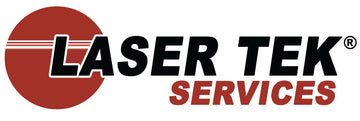Laser light pulses travel really fast at the rate of nanoseconds but the pulse-flashes emitted by the Light Emitting Diode (LED) bar surpasses its speed. Consequently,LED printerscan produce printed pages much faster than laser printers. So what then is behind the speed advantage of LED over laser technology in the context of printing? The design of the LED printer’s scanner accounts for the variance in speed. A single laser device is employed to scan laser printer images while over a thousand diodes emitted by the LED printer performs the scanning function. It is now a case of 1 versus several thousands and by sheer numbers alone, LED will outmaneuver laser printers in any given instance.
Laser Technology. Raster image (in the form of dots) emanating from the server is relayed to the laser scanning assembly and projected to the rotating Organic Photo-Conductive (OPC) Drum; one dot at a time. Imagine a laser printer capable of producing 1,200 dots per inch. How many more dots will be required to print an entire row of dots in an 8 inch paper breadth? Moreover, how many rows of dots are needed to complete the vertical scanning and printing of all raster graphic images of a single page document?
For a square inch image, 1,440,000 dots are needed to produce a solid print on paper. Consequently, more is required if the image covers the entire breadth of a page. Laser pulses from the scanner of a laser printer must be outrageously fast to be able to churn out say 47 pages per minute of hard copy documents.
LED Technology.LED Printing is different because instead of laser light beams, light emitting diodes are arrayed on the scanner to deliver light pulses. While laser scans one dot at a time, LED devices scan one row of dots at a time. This implies that for a square inch of print on paper, LED diodes will only scan the raster graphic image 1,200 times (1,200 dpi resolution) versus a laser beam that will perform scanning 1,440,000 times. Therefore, the disparity in dots delivery will obviously favor the LED Printer.
Resolution Limitations.LED technology is technically inferior than laser technology with regards to output resolution. LED printers can only deliver at most 600 horizontal dpi resolutions. Although LED can scan at faster speeds, it will be technically impossible to pack 1,200 diodes into every linear inch of scanner length. Vertical dpi resolution however does not pose the same technical difficulties because scanning will be dependent on the print engine and how fast the diodes can blink.
Laser printers meanwhile are not hampered by technical limitations because its technology can conveniently deliver on its promise of producing 1,200 dpi x 1,200 dpi resolution for printed output. Perhaps, what holds back the laser printer’s performance is the print engine that may not be able to match the scanner’s speed. If media cannot move synchronously, this will affect vertical dpi resolution but not the horizontal dpi resolution.So for the 600 dpi x 1,200 dpi skew resolution of a LED printer, printout quality can definitely not match those delivered by the laser printer.
So when print speed is priority, LED printers will be a good buy. But if it’s quality print output you are looking for,laser printers will work best for you.




